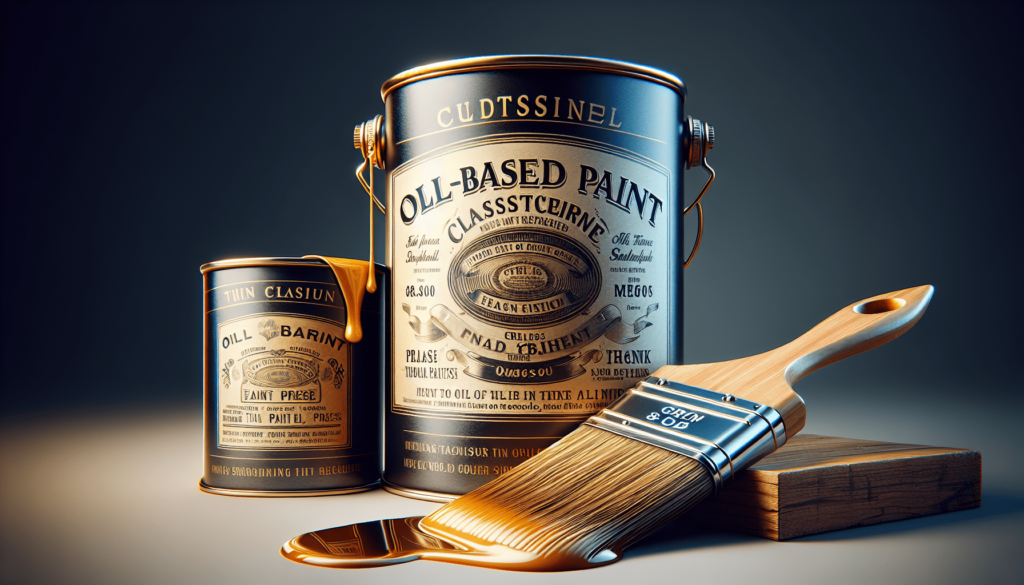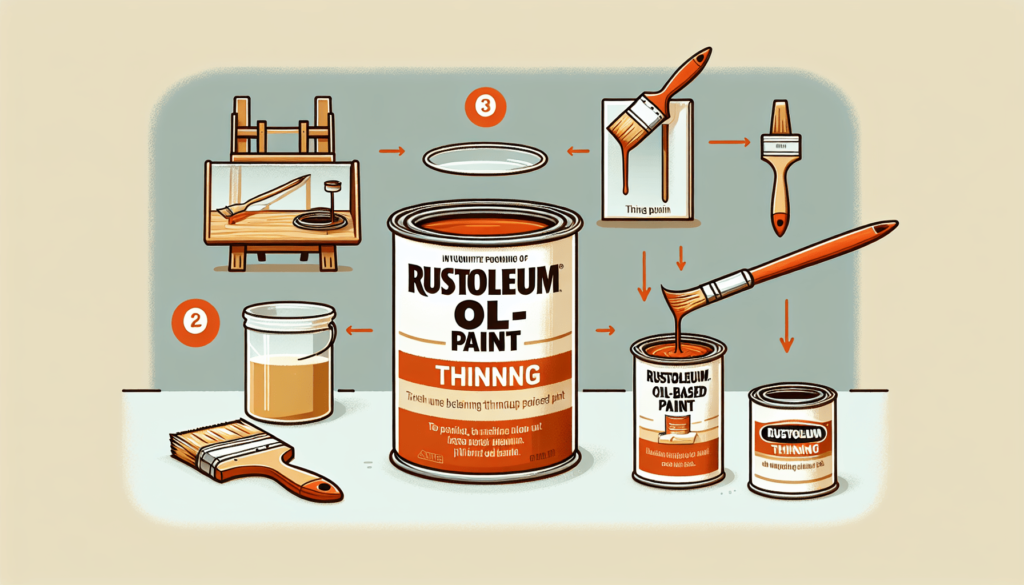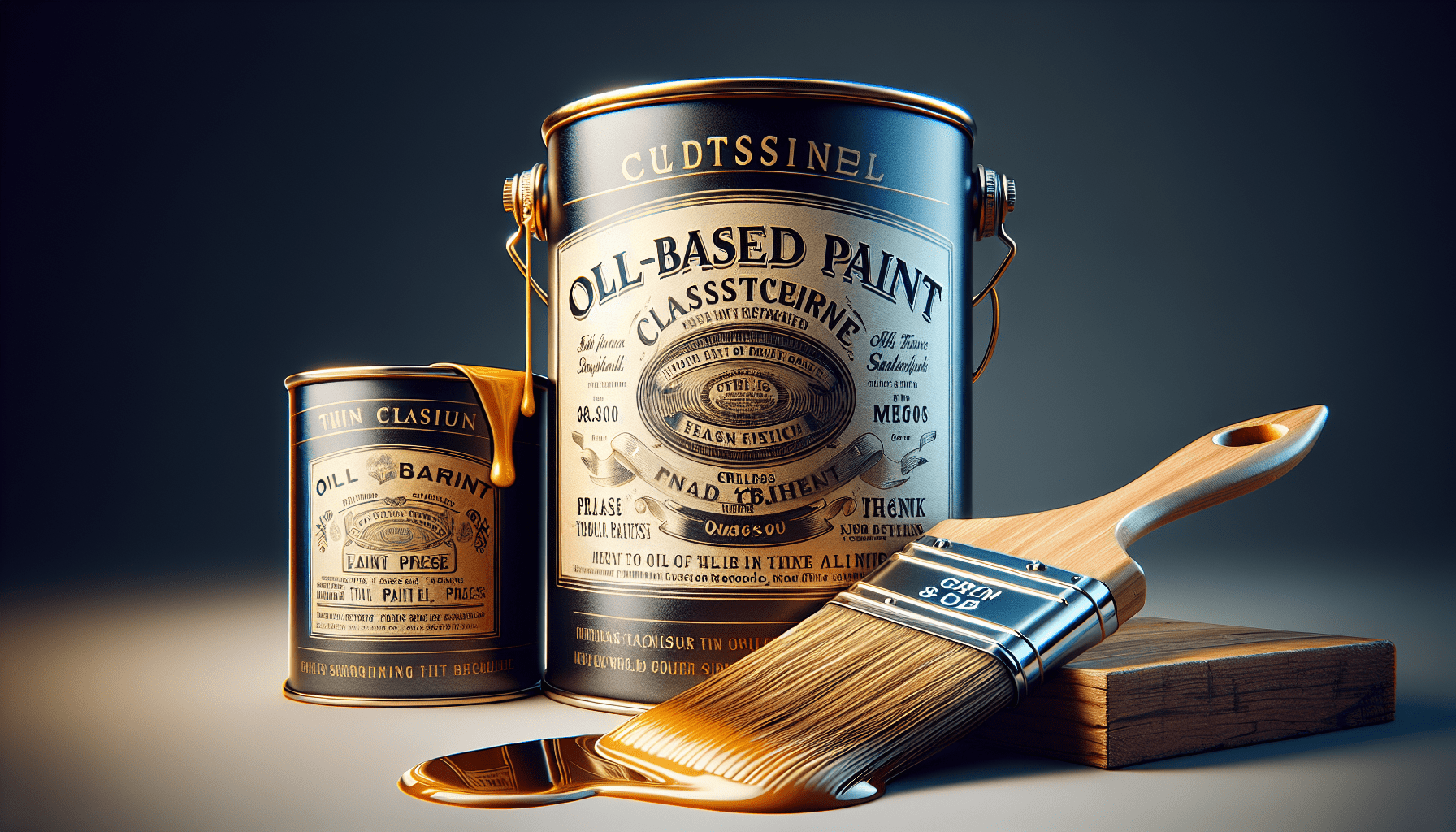Overcoming the common challenge of thickened Rustoleum oil based paint has never been easier. This comprehensive guide illuminates the step by step process of properly thinning Rustoleum oil-based paint, providing you with the vital knowledge needed to achieve a flawless finish. It outlines the importance of achieving the right consistency, practical steps to accomplishing it, and vital safety precautions to be observed. Breathe new life into old tins of paint and equip yourself with the toolset to bring your projects impeccably to life.
Why Thin Rustoleum Oil Based Paint
The process of thinning paint can sometimes be viewed as an unnecessary step. However, this perception can often lead to substandard painting results. While Rustoleum oil based paint is known for its superior quality and durability, it may require thinning for optimal results. The process of thinning paints like Rustoleum can enhance its overall application and appearance.
Advantages of thinning Rustoleum oil based paint
One of the most compelling reasons to thin Rustoleum oil based paint is to improve its workability or viscosity. A properly thinned paint can be easier to spread, delivering a more uniform, smooth finish. By thinning your paint, you also help to reduce brush or roller marks and streaks. Another advantage is that thinning extends the paint’s coverage, helping you get more out of every can.
When to thin Rustoleum oil based paint
Knowing when to thin paint is key to achieving fantastic painting results. You should consider thinning Rustoleum oil based paint if it appears too thick or heavy, and seems to drag or leave pronounced brush strokes when applied. Conditions such as humidity, temperature, or the particular surface you’re painting can also influence the need for thinning.
Materials and Tools Needed
Before starting the thinning process, gather all essential materials to ensure a smooth operation.
Rustoleum oil based paint
Ensure you have enough Rustoleum oil based paint for your project. If you’re working on a large surface area, multiple cans might be required.
Mineral spirits or paint thinner
A good quality mineral spirit or paint thinner is essential in thinning oil based paints. It breaks down the paint, making it easier to apply.
Measuring cup
A measuring cup helps in achieving the proper paint to thinner ratio, an essential factor for the best thinning results.
Stir stick
You’ll need a stir stick to mix the paint and thinner properly. Ensure the stick is clean to avoid contamination.
Funnel
A funnel can help guide the paint and thinner into the mixing container, reducing spillage and waste.
Strainer
A paint strainer is crucial to remove clumps and debris from the thinned paint, ensuring a smooth application.
Empty container for mixing
You’ll need a clean, empty container for mixing the paint and thinner. Make sure it’s large enough to accommodate the thinned paint.
Protective gloves, Eye protection, Ventilation or mask
Safety is paramount. Always wear protective gloves and eye protection to prevent accidental splashes. A mask or a well-ventilated space is necessary to protect against potential fumes.

Preparing the Paint
Before you begin the thinning process, adequate paint preparation is important.
Check the paint’s consistency
It’s advisable to check the consistency of your Rustoleum oil based paint before thinning it. If it’s too thick or seems clumpy, then thinning is necessary.
Choose the appropriate thinner
When using oil based paints, mineral spirits or a standard paint thinner is the correct choice.
Select an appropriate mixing container
Select a container that can comfortably accommodate the volume of the paint and thinner that will be mixed.
Measure the desired amount of paint
Using your measuring cup, measure out the amount of paint you’ll need for your project.
Remove any debris or clumps
Before any mixing happens, make sure to remove any debris or clumps in your paint – a strainer works well for this process.
Thinning the Paint
Once your preparation is complete, proceed to the main paint thinning process.
Pour the measured paint into the mixing container
Pour your pre-measured amount of Rustoleum oil based paint into your selected mixing container.
Add a small amount of thinner
Begin by adding a small ratio of thinner to paint. A common rule of thumb is to start with a 4:1 ratio – four parts paint to one part thinner.
Stir the paint and thinner mixture thoroughly
Using your stir stick, mix the paint and thinner well until a uniform consistency is achieved.
Check the consistency and repeat if necessary
Check to ensure the paint has achieved the desired consistency. If it’s still too thick, add a small amount of thinner and stir again.
Strain the thinned paint for smoother application
Use a paint strainer to filter out clumps and debris from the thinned paint. This results in a smoother paint that’s easier to apply.

Testing the Thinned Paint
Before you proceed with applying your thinned paint on a large scale, it’s important to first test it out.
Perform a test application on a small surface
Find a hidden or less noticeable area and apply a small amount of the thinned paint. This will help you gauge its application.
Assess the coverage and consistency
Inspect the test area for consistency, coverage, brush strokes, and drying time.
Make additional adjustments if needed
If the test paint is still too thick or thin, adjust as needed by adding either more paint or thinner.
Tips and Precautions
Thinning paint requires care to ensure safety and achieve the best results.
Start with small amounts of thinner
It’s recommended to start with only a bit of thinner, and slowly add more until you reach the desired consistency. Remember, you can always add more thinner, but you can’t take it away.
Mix thoroughly to achieve desired consistency
Ensure the paint and thinner are well mixed to achieve a consistent mixture.
Avoid over-thinning the paint
Over-thinning can lead to weak paint that doesn’t adhere well to surfaces and doesn’t offer good coverage.
Ensure proper ventilation and personal protective equipment
Always thin paint in a well-ventilated area while wearing appropriate safety gear like gloves and eye protection.
Follow safety instructions and guidelines
Always follow safety instructions on the paint can and thinner to avoid mishaps.
Cleaning Up
Cleanliness is essential for maintaining your painting tools and for proper disposal of painting materials.
Clean the mixing container, stir stick, and strainer
Once you’re done with your painting project, clean your painting tools immediately. This practice prolongs their life and ensures they’re ready for future use.
Dispose of any leftover paint or thinner properly
Never pour leftover paint or thinner down the drain. Find out what your local regulations are for disposal of these materials, as they can be hazardous.
Wash hands and remove protective gear
After cleaning up, wash your hands thoroughly and safely store your protective gear.
Applying the Thinned Paint
Once you’re satisfied with the consistency of your paint, it’s time to start the paint application.
Use appropriate brushes, rollers, or sprayers
Different tools are suitable for different types of applications. Brushes are suitable for smaller projects or for trimming, rollers work well for larger surface areas, while paint sprayers are efficient for large areas or patterned surfaces.
Follow recommended application techniques
Each tool has a recommended technique for the best application results. Brushes should be used with long, even strokes, while rollers should be used in a ‘W’ motion.
Apply thin coats, allowing sufficient drying time
For a smoother finish, apply the paint in multiple thin coats rather than a single thick one. This method also allows adequate drying time between coats.
Avoid excessive brush marks or streaks
Overlapping the paint or going over the same area excessively can lead to streaks or brush marks. Aim for smooth, even coverage.
Curing and Drying
Post-application, it’s important to let the paint cure and dry properly.
Allow the painted surface to cure for recommended time
Refer to the paint can label to see the recommended curing time. Each paint varies in dry time, and factors such as humidity and temperature can also affect this.
Ensure proper ventilation during the drying process
Improper ventilation can affect the drying process of the paint. It can lead to trapping of moisture, which can damage the painted surface.
Observe any specific instructions on the paint can
Always comply with any specific instructions from the paint manufacturer regarding drying.
Avoid direct contact or excessive force during drying
During the drying period, avoid any direct contact or applying force to the painted surface.
Final Tips and Considerations
As your painting project nears completion, there are a few additional housekeeping tips to consider.
Store thinned paint properly for future use
Any remaining thinned paint can be stored in a tightly sealed container for future use.
Label the container with paint details and date
To ensure proper usage, label your container with the paint color, type, thinning ratio, and date.
Consult product instructions before thinning
Always read the manufacturer’s instructions before thinning your paint – some paints might have specific thinning instructions.
Observe safety precautions for oil based paints
Always handle oil based paints with care. They are flammable and can emit potentially harmful vapors. Always use in a well-ventilated area.



